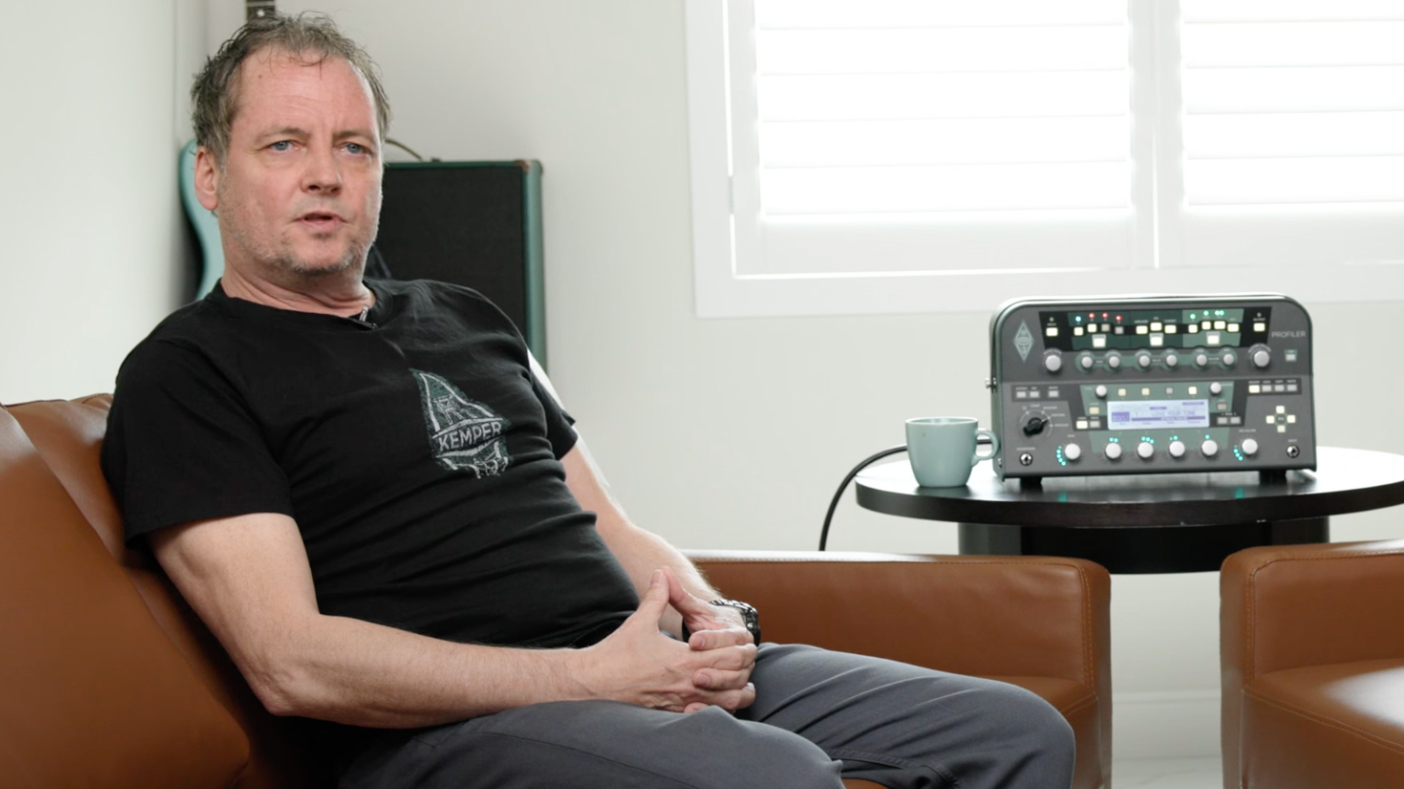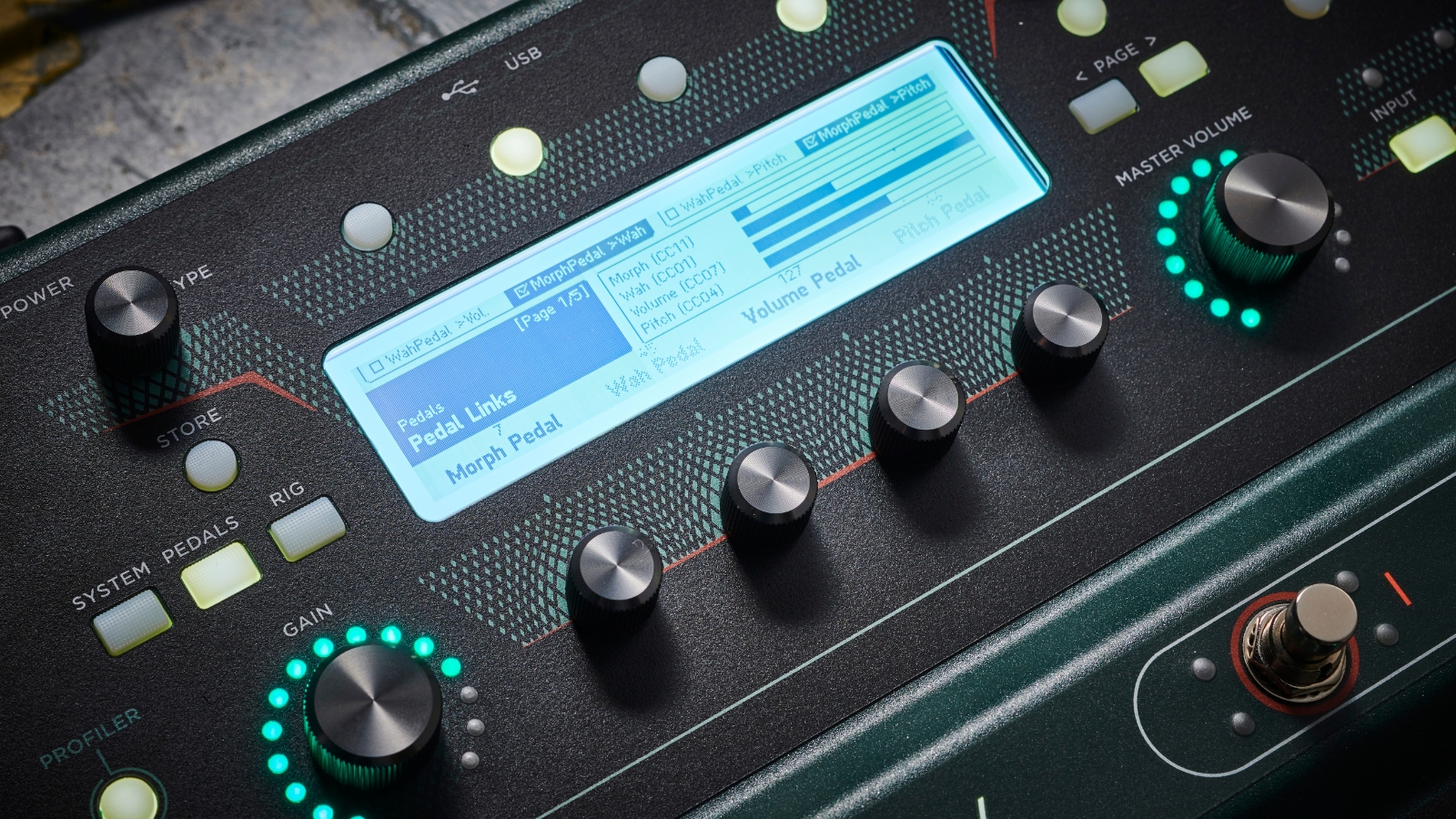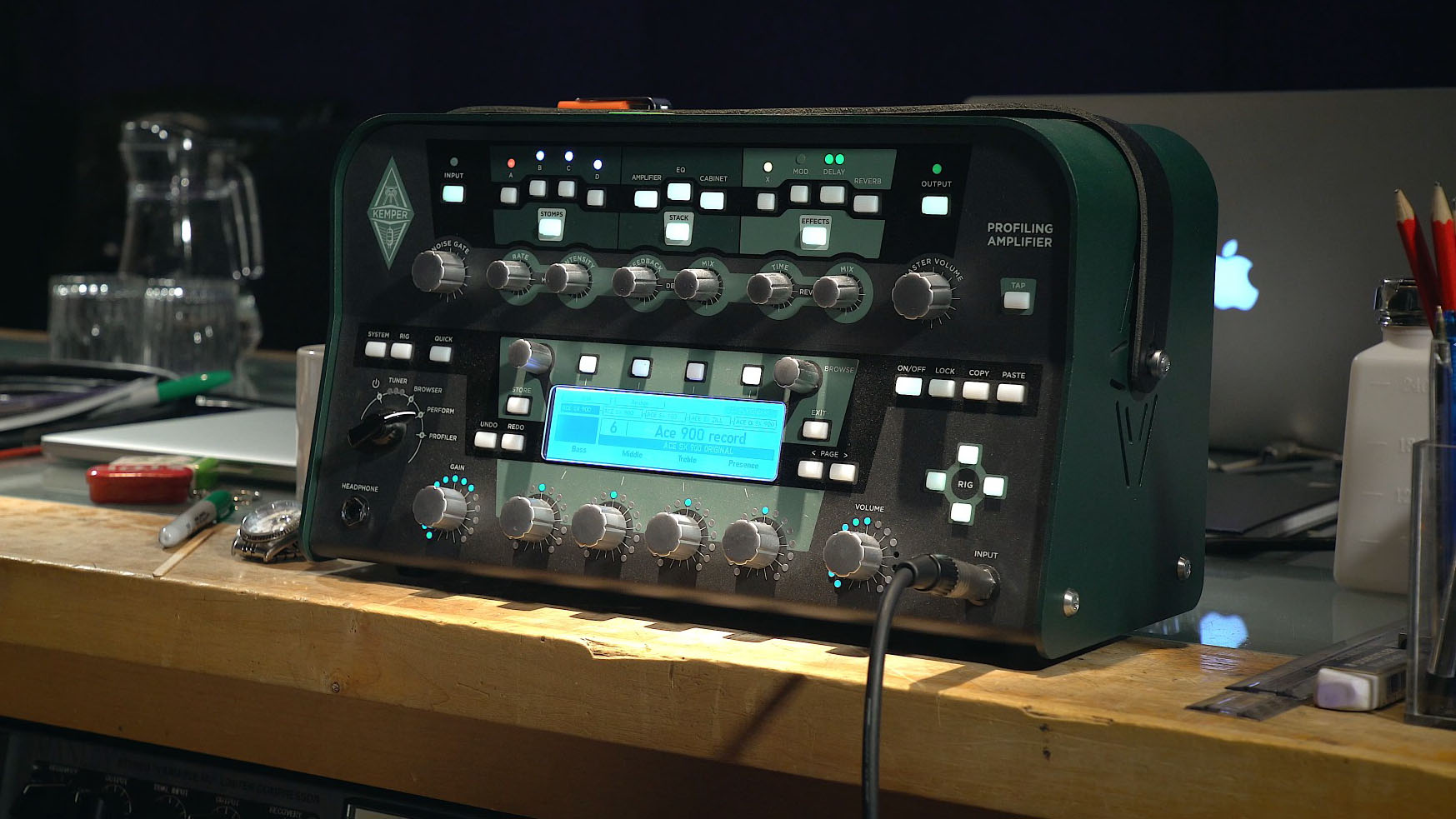
One measure of an amp modeller is how well the company supports it after you buy it – Line 6 has proved exemplary in this regard with the Helix. But Kemper's plans have just been revealed and they are both unexpected and ambitious. Welcome to the world of… liquid profiling?
"The big news is something we call the Liquid Profile," reveals founder Christoph Kemper in an interview with ToneJunkie TV you can see below. "It's the perfect marriage of modelling and profiling. I think everyone wishes to have both at the same time without any drawbacks. And that's what we made."
That is big talk, but it comes from a man who can walk it. The Kemper team were at NAMM revealing the new technology in meetings – but what is it?
Firstly, if you thought the company had been pretty quiet since the long-awaited release of the floor-based Kemper Stage and welcome addition of the Kabinet, prepare to order a large slice of surprise cake. There are five new Kemper features coming; and this is only one of them.

A profiling assistant is being added to the Rig Manager software to enable you to profile through it rather than just the hardware. Kemper has also announced a marketplace that will be integrated into Rig Manager to try and buy profile packs from artists and specialists.
Android support has also been added to phones and tablets for controller Kemper profilers remotely. And perhaps the second biggest news of the five, but long overdue for us, you can now use the Kemper as a USB interface for recording direct with a DAW.
But the Liquid Profiling update sees Kemper striding confidently into the future while supporting its customer base with a free update. It involves Kemper modelling the tone stack EQ section's interaction with the gain controls of specific amps to capture the deeper nuance of their behavior. There are 40 channel models from amps including the Marshall JTM45 and Plexi, Fender Super Reverb and Vox AC30 that will be offered with this enhanced feature. In theory you can also take a specific Vox amp control and add it to a Fender amp profile, if you're really into experimenting.
Get the MusicRadar Newsletter
Want all the hottest music and gear news, reviews, deals, features and more, direct to your inbox? Sign up here.
The Liquid Profile offers the "accurate EQ from the amp burned into your profile", according to TomeJunkie. There's also the option to enhance existing profiles, providing the user knows what settings were captured in the profiling stage.
"The profile is general, you add a model to that of a specific amp and this model should know about how the controls [behave], where you put the gain, where you put your tone stack - the equalizer – by that it will calculate the sound for the profile," explains Christoph into the basics of how Kemper's new technology works.
Liquid Profiling is honing in on the interactions between specific amps' controls; enhancing profiling with additional modelling. This EQ and gain modelling can then be applied to profiles. "It adds things to the process," says Christoph regarding the workflow for players building their tones with this new patented tech. "If you don't want to do it, if you're not going to make a Liquid Profile then everything stays the same. If you go in [to create] a Liquid Profile then you'll be asked to set the position of the original gain of the reference amp to the same knob position. If it's on four or if it's on seven; you set it there on the same value.

What's even more interesting is Christoph says you can make a Liquid Profile for amp models that haven't been captured yet; say you have an obscure tube amp at home or have borrowed one. You can even "fool" the system by adding tonestacks to the models of amps that didn't have them originally. "We definitely allow that because it's fun," says Christoph. "You can take any profile, you can also have profiles elevated to a Liquid Profile that are eight years old." The challenge for that will be that players may be guessing what the gain and EQ settings were for the original capture as they forgot or didn't note them at the time, therefore compromising the accuracy because this is the crucial component for accuracy.
There are also more channels to come from Kemper. "That part that we have modelled is just a small fraction of the amp," says Christoph of the Liquid part of the profiling puzzle. "We just wanted to model what you have in your hands – which is not too much. It's bass, middle, treble, presence… it's so small in a way and it's not difficult to be authentic with these small things."
You have to deliver both; first authenticity and then more
It'll be interesting to see if this feature will win over some of the tonehounds who are not sold on profiling. We're just happy to see Kemper's commitment to product support and probably winning new players in the process.
And Christoph has some thoughts about those who will never be won round to the digital realm and it's wider and deeper editing possibilities compared tube amps, but it's not the response you might expect.
"I think there are sometimes two sides to that story. First you would go for authenticity to know where you are and then, if you feel good and safe because you are in that 'authentic world', then you look for more. I think, in a way, you have to deliver both; first authenticity and then more.
The authenticity part still guides Christoph's decisions, even when he gets requests that are contrary to it.
"My philosophy to that is there are users, when we just had the Tube Screamer [model] as an overdrive, they asked for more equalising features for the Tube Screamer and the direct mix thing," he recalls. "That was a user request. I thought, 'No, this is not right.' If I go and model a Tube Screamer then it should be a Tune Screamer, not getting more arms and eyes."
The idea of combining one amp's tonestack with another amp seems to fly in the face of that authenticity. Christoph reasons this is not cheesy in the church of tone.
"This is not breaking the authenticity," he argues. "I would say it's more a low-level mashup of two authentic things. I would always recommend, when it's about tonestacks and stuff like that; I would always try to use equalisers after the amp, equalisers before the album, starting with a definition control, because these are ways you can really shape your tone. I'm not seeing too many guitarists doing that – especially equalisers before the amp. With the Profiler you can do that."

Rob is the Reviews Editor for GuitarWorld.com and MusicRadar guitars, so spends most of his waking hours (and beyond) thinking about and trying the latest gear while making sure our reviews team is giving you thorough and honest tests of it. He's worked for guitar mags and sites as a writer and editor for nearly 20 years but still winces at the thought of restringing anything with a Floyd Rose.
“I’m beyond excited to introduce the next evolution of the MT15”: PRS announces refresh of tube amp lineup with the all-new Archon Classic and a high-gain power-up for the Mark Tremonti lunchbox head
“Its mission is simple: unleash the power of any amplifier or line-level source without compromise”: Two Notes promises a “watershed” in tube amp control with the Torpedo Reload II










